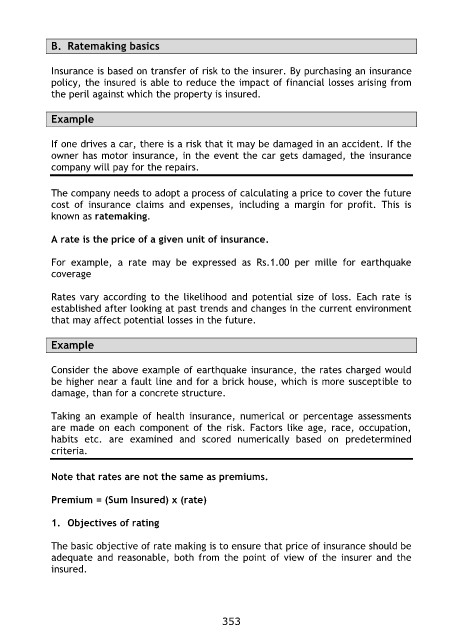Page 359 - IC38 GENERAL INSURANCE
P. 359
B. Ratemaking basics
Insurance is based on transfer of risk to the insurer. By purchasing an insurance
policy, the insured is able to reduce the impact of financial losses arising from
the peril against which the property is insured.
Example
If one drives a car, there is a risk that it may be damaged in an accident. If the
owner has motor insurance, in the event the car gets damaged, the insurance
company will pay for the repairs.
The company needs to adopt a process of calculating a price to cover the future
cost of insurance claims and expenses, including a margin for profit. This is
known as ratemaking.
A rate is the price of a given unit of insurance.
For example, a rate may be expressed as Rs.1.00 per mille for earthquake
coverage
Rates vary according to the likelihood and potential size of loss. Each rate is
established after looking at past trends and changes in the current environment
that may affect potential losses in the future.
Example
Consider the above example of earthquake insurance, the rates charged would
be higher near a fault line and for a brick house, which is more susceptible to
damage, than for a concrete structure.
Taking an example of health insurance, numerical or percentage assessments
are made on each component of the risk. Factors like age, race, occupation,
habits etc. are examined and scored numerically based on predetermined
criteria.
Note that rates are not the same as premiums.
Premium = (Sum Insured) x (rate)
1. Objectives of rating
The basic objective of rate making is to ensure that price of insurance should be
adequate and reasonable, both from the point of view of the insurer and the
insured.
353

